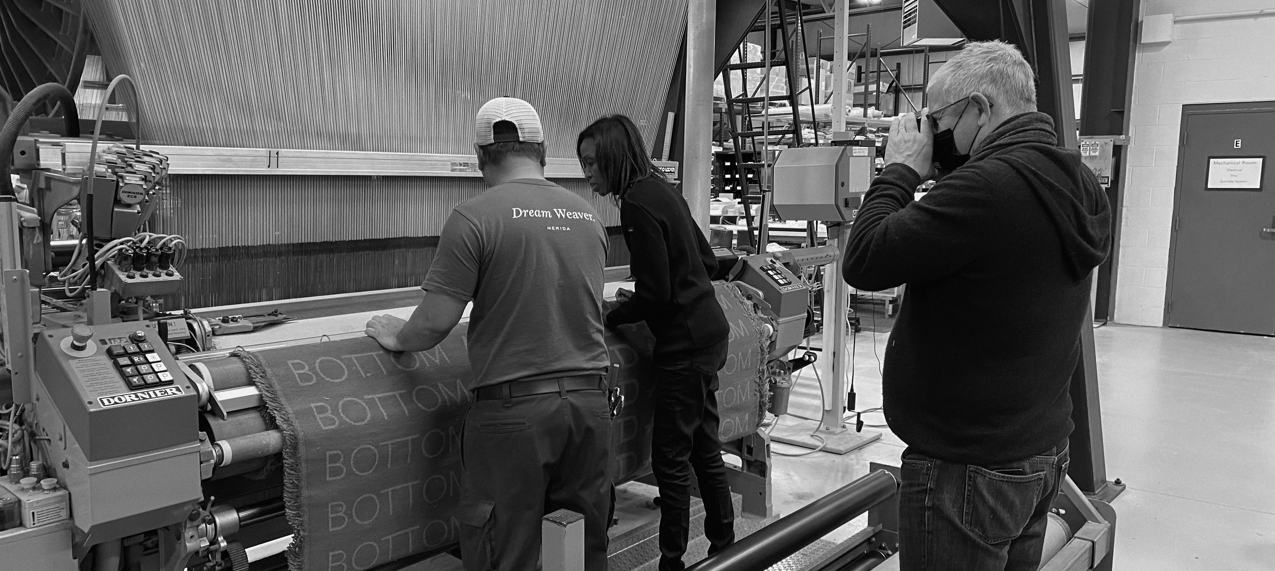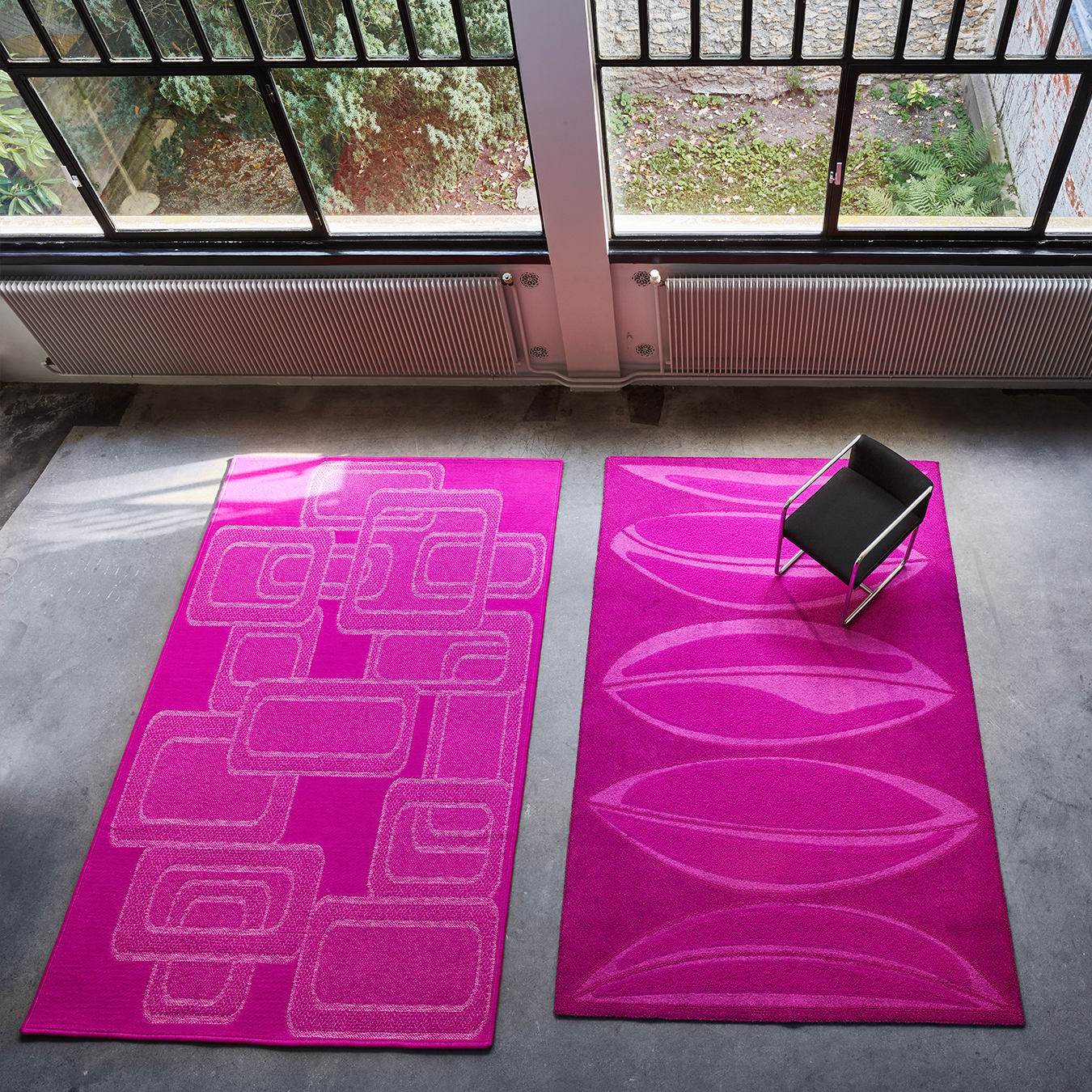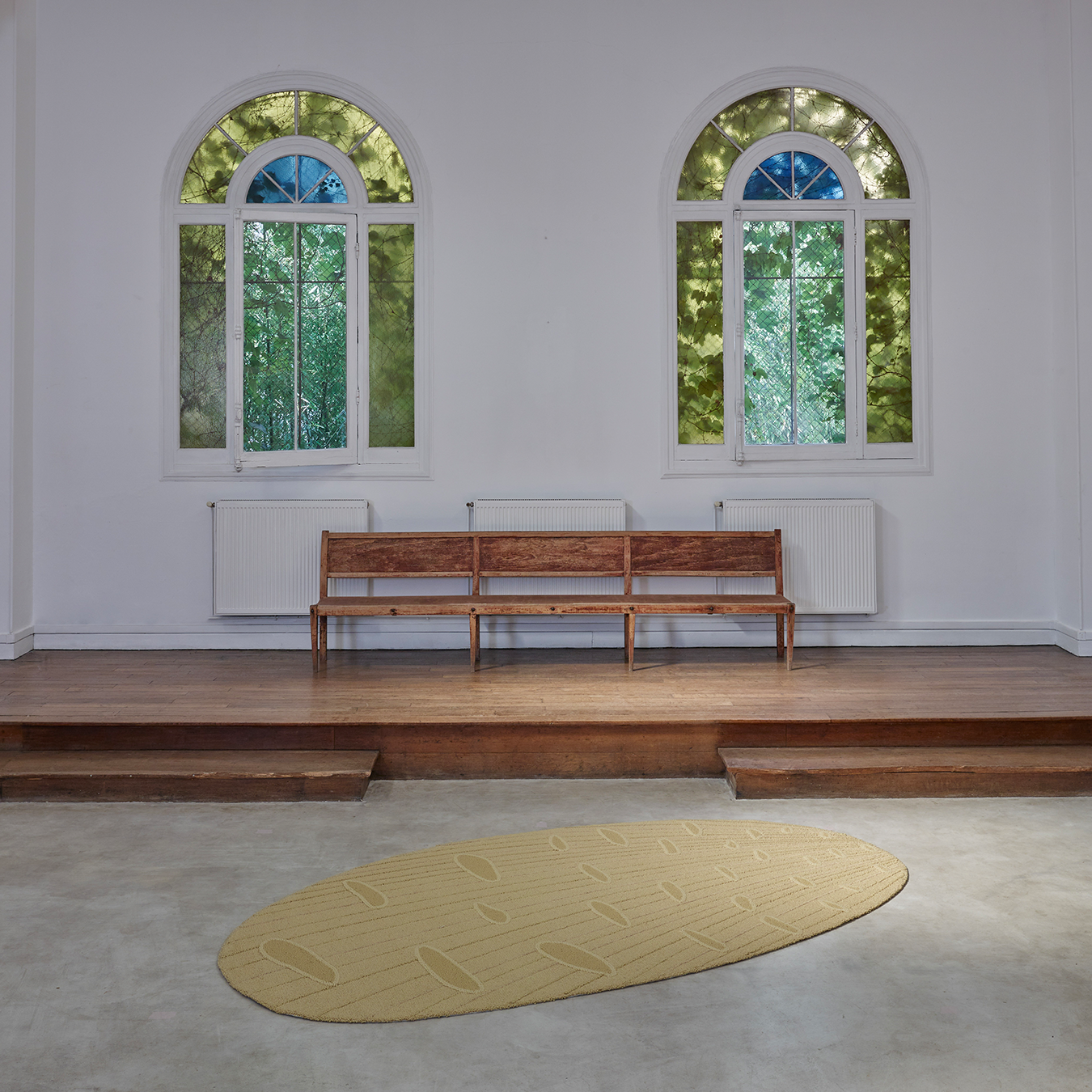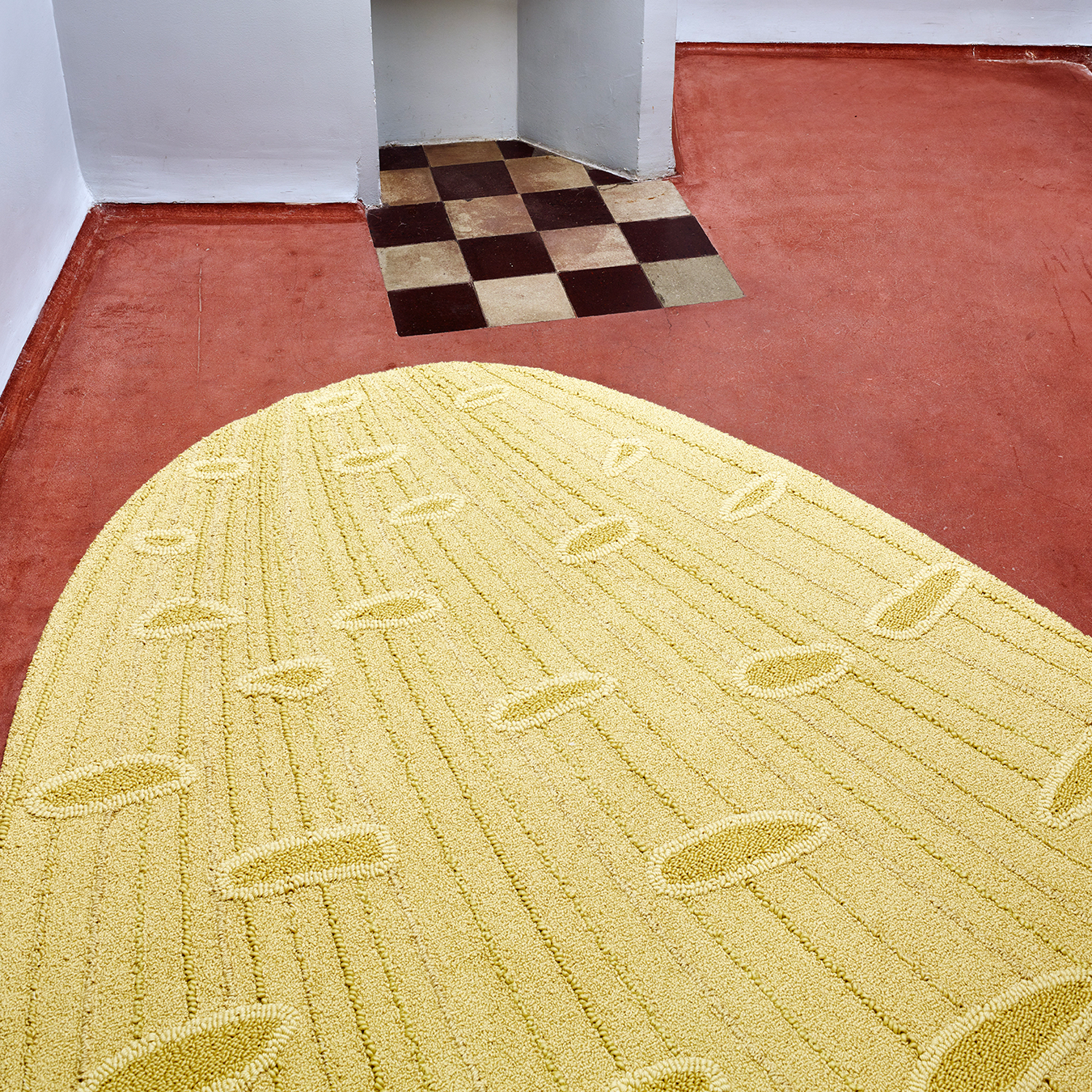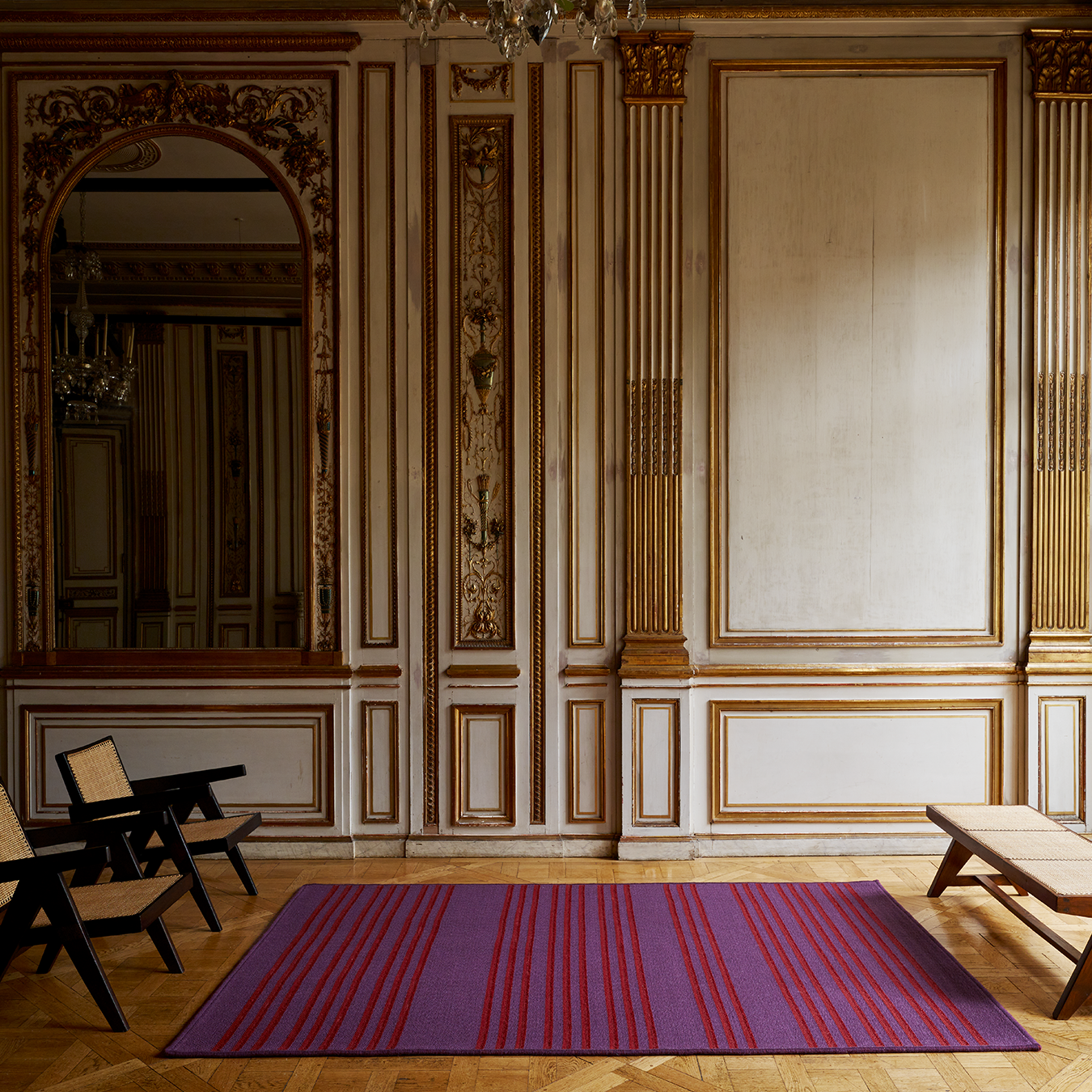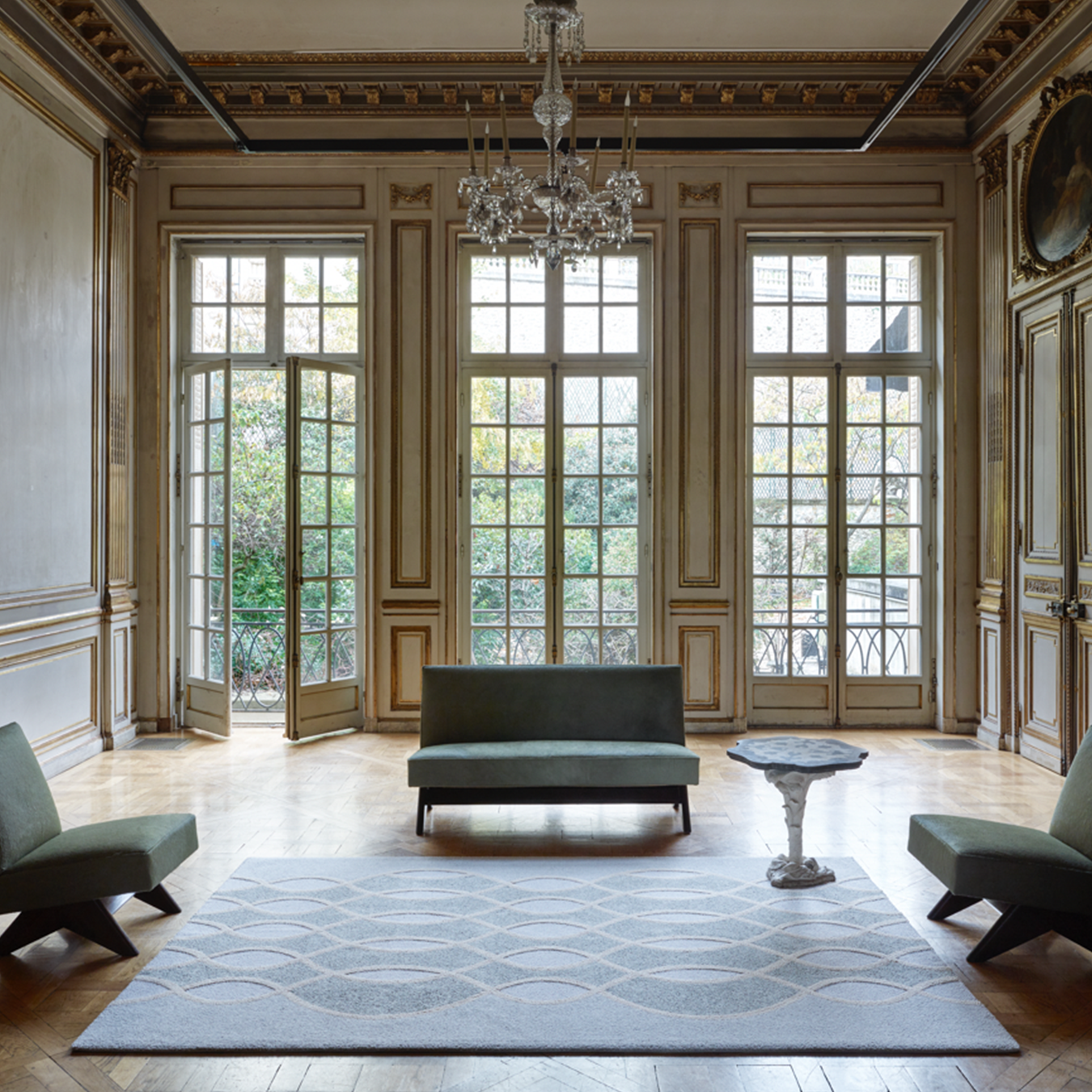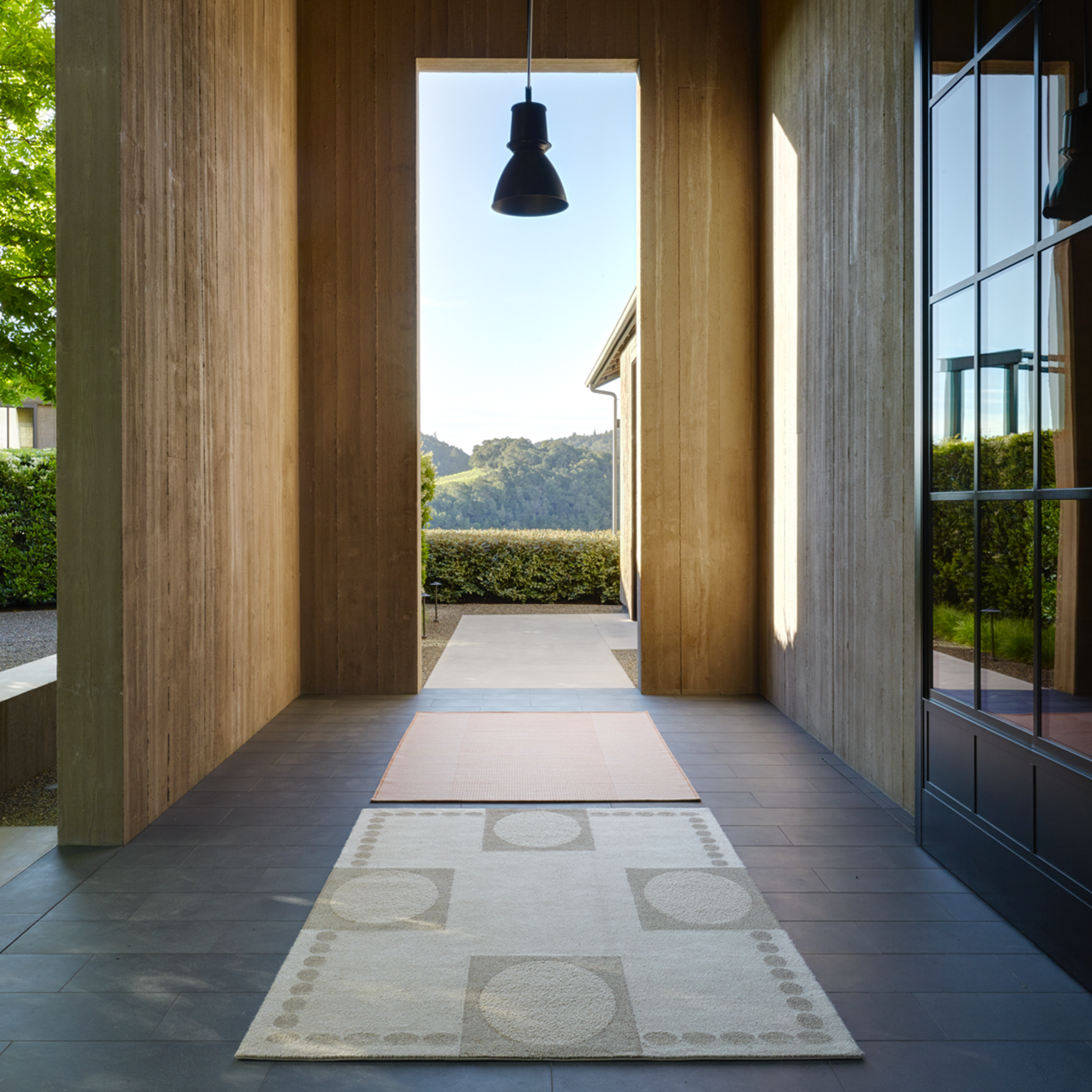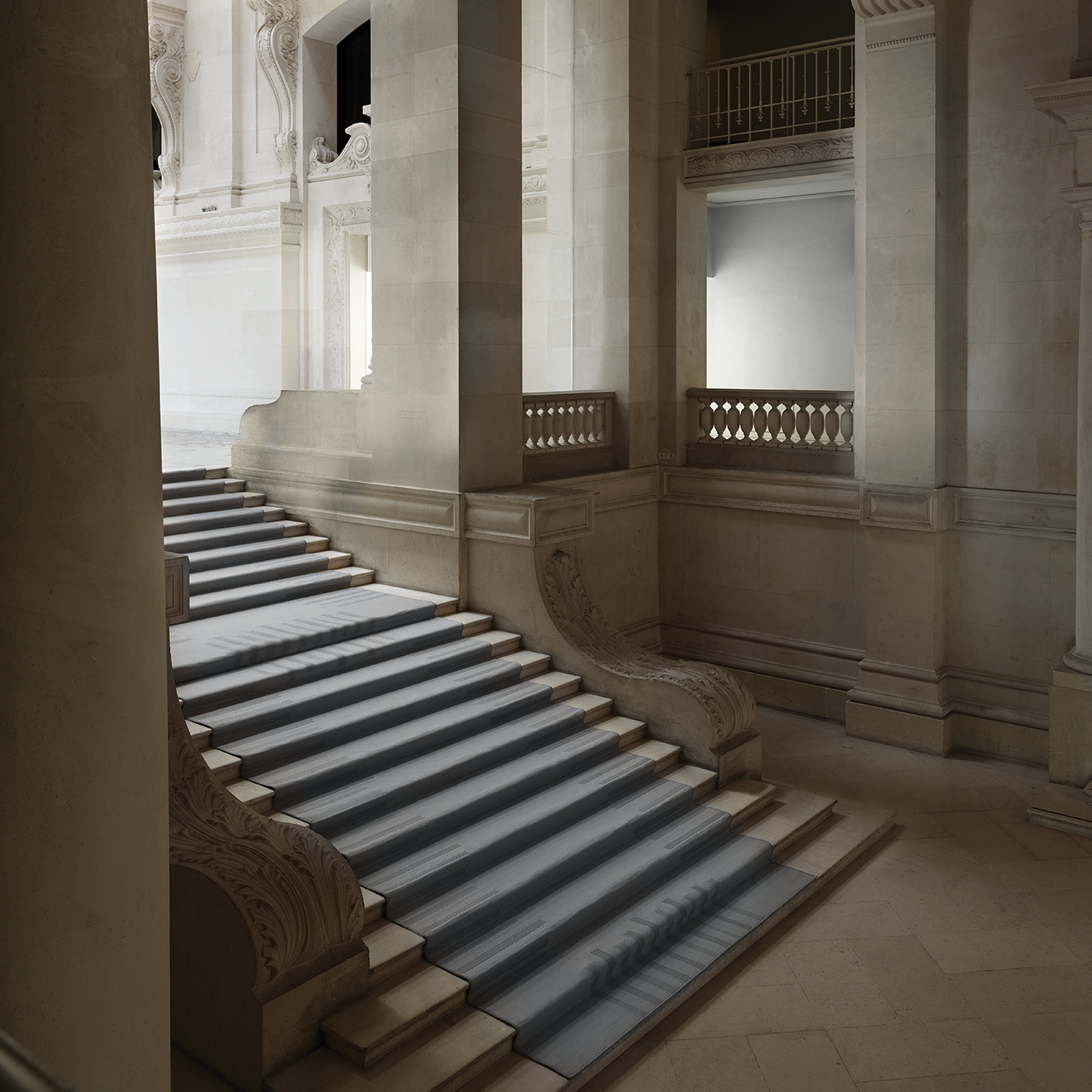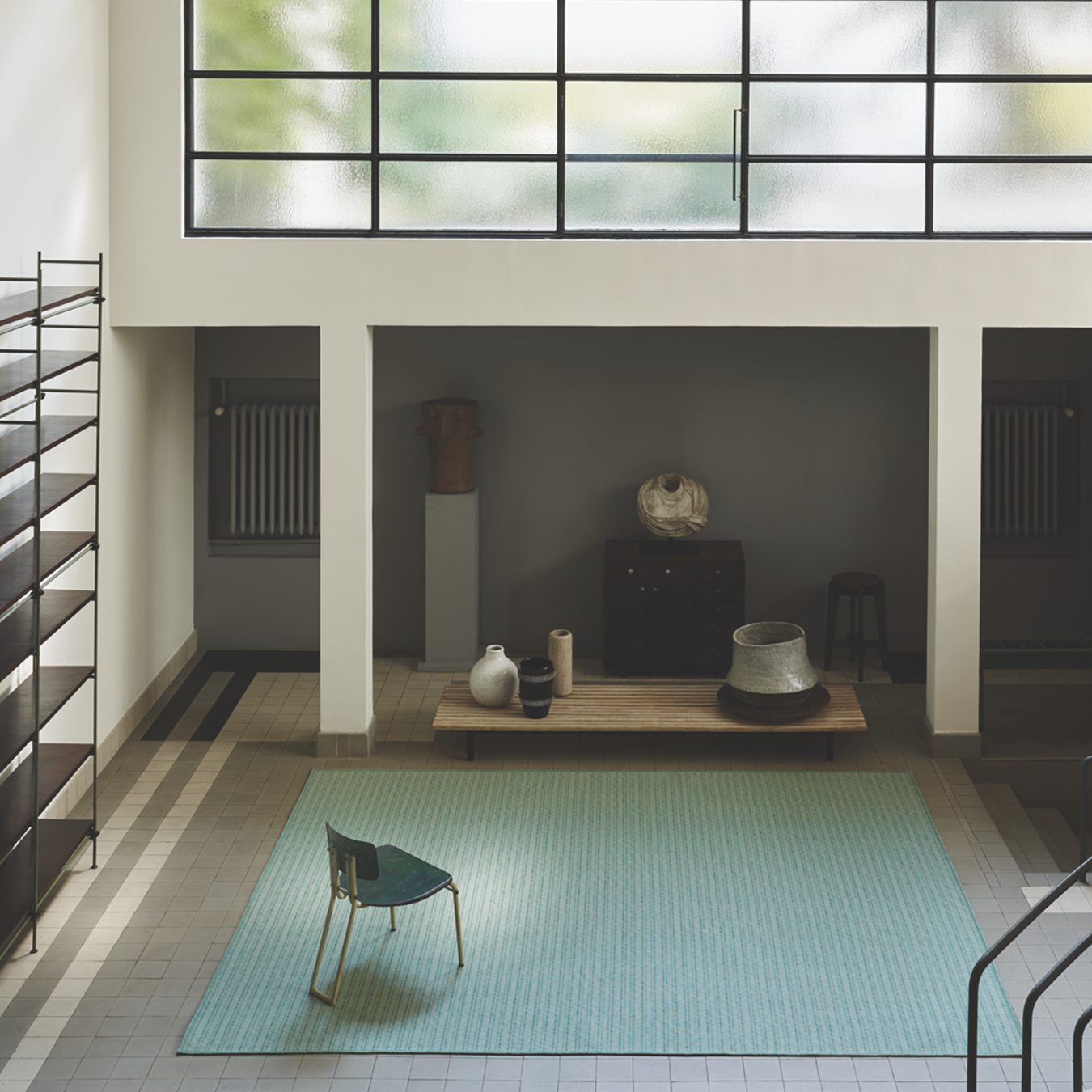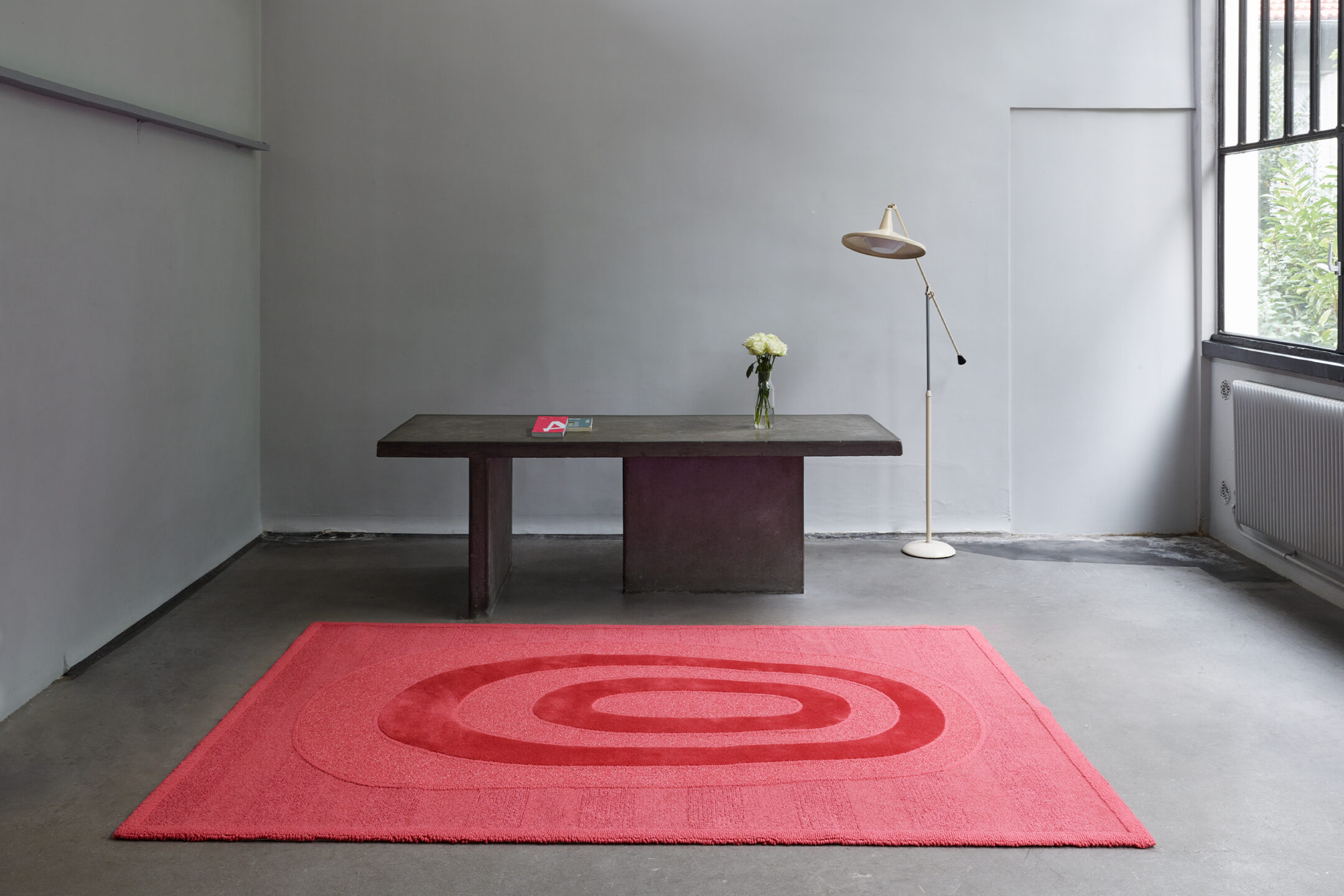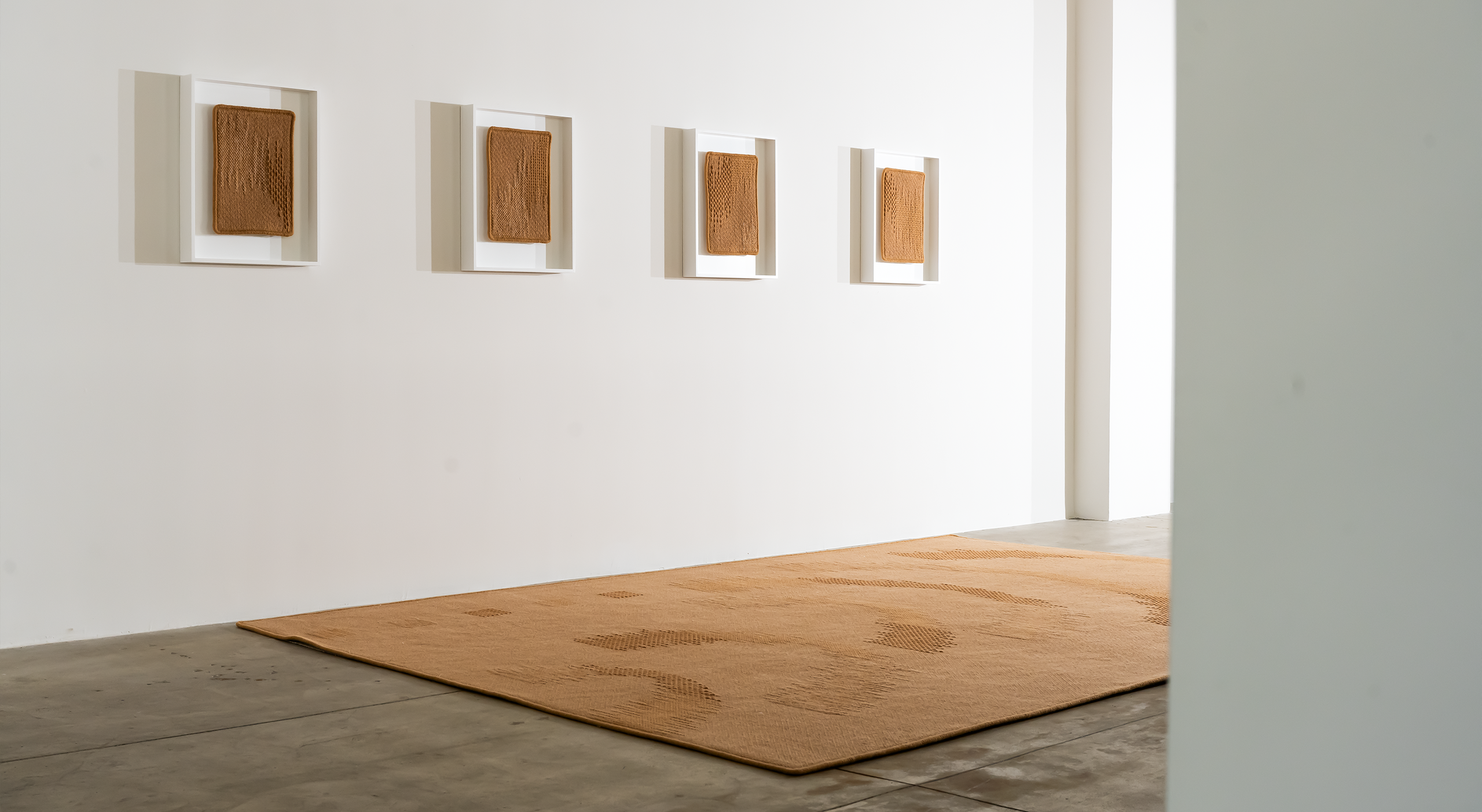Follow the Light
“It’s like a small journey in a day, following the light through the space.”
– Sylvie Johnson, Merida Artistic Director
“It’s the canvas I’m given that makes it exciting.”
– Richard Powers, Photographer
Last month, renowned photographer Richard Powers stopped by our Fall River workshop, on the heels of a two-day shoot for Merida’s upcoming collection. We took the opportunity to talk with Richard and artistic director Sylvie Johnson about photographing Merida rugs, often in iconic spaces, and how they both work the room to bring our original textiles to life.
Q: How long have you and Sylvie been collaborating on shoots for Merida? How has it evolved?
RP: We shot really well together right from the beginning. There was a synergy between us of what we were looking to capture.
SJ: Uh huh, and [we started working with Richard in] 2018, two collections each year, so today’s shoot made the ninth.
Q: Sylvie, what does Richard’s eye bring to our rugs?
SJ: So many things. His education, and by that I mean his background and his travels… he has experienced different countries and people. He has a way of seeing that treats the rugs as individuals. It’s a Japanese way of seeing and thinking, even though he is European. And how focused he is.
RP: (laughs) I hope I’m in focus!
SJ: What I appreciate most about Richard is his sense of light and shadow, in the Japanese sense.
RP: I like to work with natural light. I add a little bit of flash to creative a bit of edge and contrast on the rugs. I mostly look for natural light in the spaces where I shoot, but you adapt to the space.
Q: What are the challenges of shooting rugs?
RP: Well, they’re flat, and usually the same shape so you have to be creative. But you really want the rugs to speak for themselves. I’m always looking for simple angles that don’t question the eye, so the viewer knows that they’re looking at the rug, as if there was no photographer.
SJ: When you go to a museum to see a painting, it’s important that it’s you and the piece, not the setting. This is why we choose minimal furniture, enough to give a sense of the room, but it’s all about the rug.
RP: When I photograph architecture, homes, I get the shot and move on. With Merida there might be 40 rugs in a collection and they all need to be shot in the same position. Of course you also need to make the frame interesting while keeping the rug as the focal point, capturing the textures and details. The challenge is the light, because while you’re shooting the light is changing. It’s teamwork, and we usually have two or three guys moving the rugs around.
SJ: Sometimes millimeters count. The angle we shoot in the morning will be different in an hour. You have to work with the light. It’s like a small journey in a day, following the light through the space. Then to return the next day and see the space with a fresh eye.
Q: I’m hearing that it’s a dynamic process, as the light in the room is continually changing, but also the rugs themselves change with the light. As you’re shooting a rug do you notice more details through the lens?
RP: Oh yeah, and especially when you see it on the screen and you get up close, the level of detail is incredible… you take a thread and add a thread and it’s intertwined with another thread. There are so many layers, that’s the magic of what Sylvie and Merida create.
SJ: You can’t present a rug authentically if the photograph lacks soul. That’s why I say Richard is our best ambassador. When I show our Atelier books to clients and they see his photos, they want to touch the rug. You can almost feel the workmanship and technique. It’s a love letter of what beauty can be.
Q: What is the role of architecture in shooting a collection? For example, when you shot the Atelier 2021 Collection at the Van Doesburg House, an architectural landmark and artist studio outside Paris, how did the space inform the way you shot the rugs?
RP: I was excited to shoot at that house. It’s somewhat unknown but it’s an iconic house… with a connection to the Bauhaus, and now it’s an artist retreat.
SJ: Yes, architects know about the Van Doesburg House, it’s a little gem. Today it’s run as a retreat for artists from the Netherlands. All kinds of artists, sculptors, writers, musicians… all inspired by the spirit of the De Stihl movement, which was a kind of minimalism but with so many layers of knowledge. We were lucky to be there last year, given the travel restrictions. We had to apply to the Dutch government for permission.
RP: The spaces that Sylvie finds are fantastic to photograph in and it’s inspiring to be able to spend a day in a place like that.
SJ: It’s a conversation between the lens of the camera and the rug, but also between the rug and the architecture, the light, the outside. Nothing exists by itself. Richard is on brand with what we’re doing with what we’re creating. There’s a consciousness to that and something unconscious is happening as well.
Q: Richard, how do you stay fresh as a photographer?
RP: I go home to the south of France, and I don’t shoot much in my hometown, maybe 10 shoots a year. You need to rejuvenate and stay fresh or you don’t appreciate what you’re photographing. If you don’t have that connection with your subject the passion is gone. Apart from great clients and interesting subjects, it’s the location that motivates me, and the architecture of the space. It’s the canvas I’m given that makes it exciting.
To see photos of the Atelier 2021 Collection, photographed by Richard Powers at the Van Doesburg House in Meudon-Val-Fleury, France, visit our Atelier 2021 Collection page.
